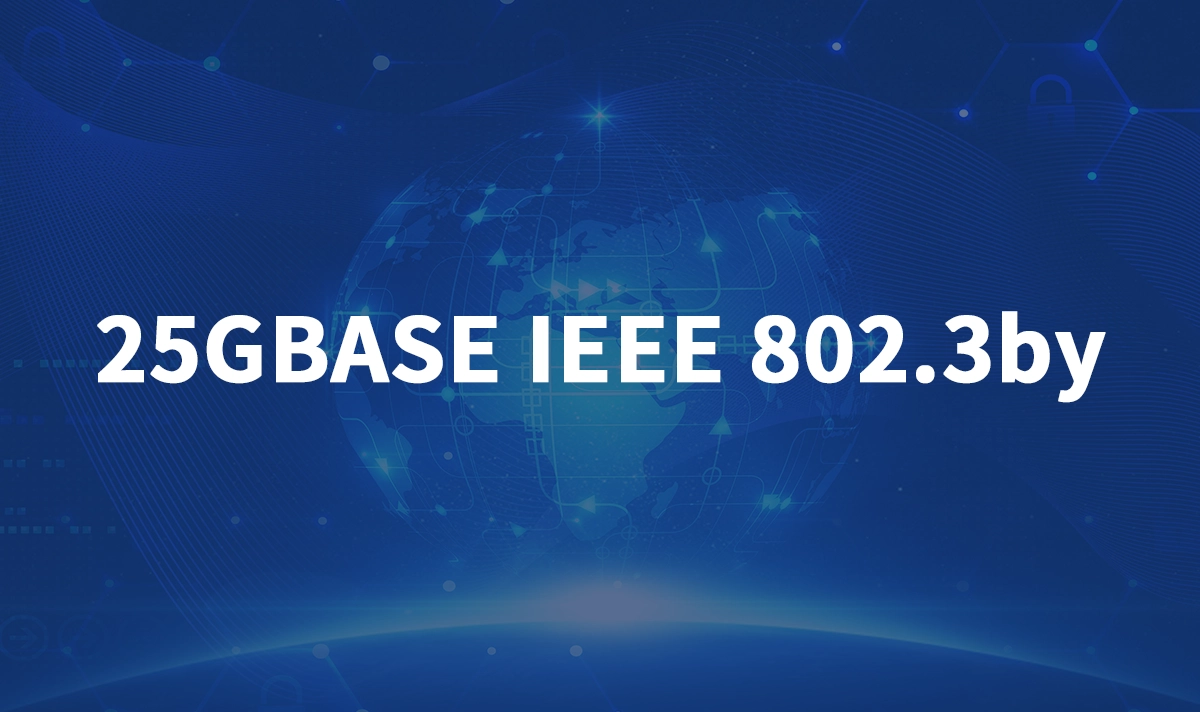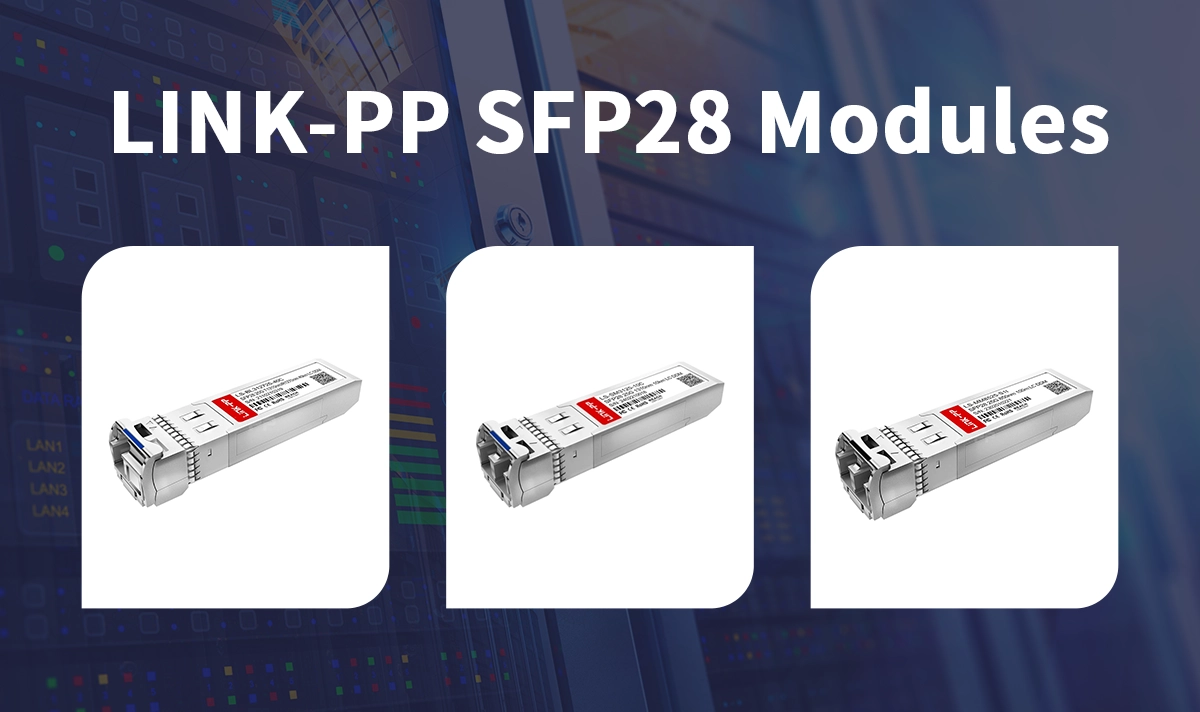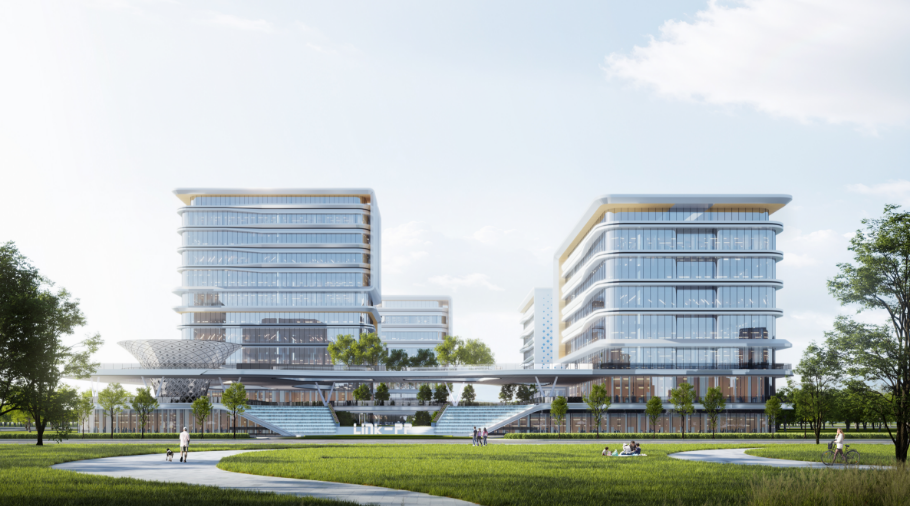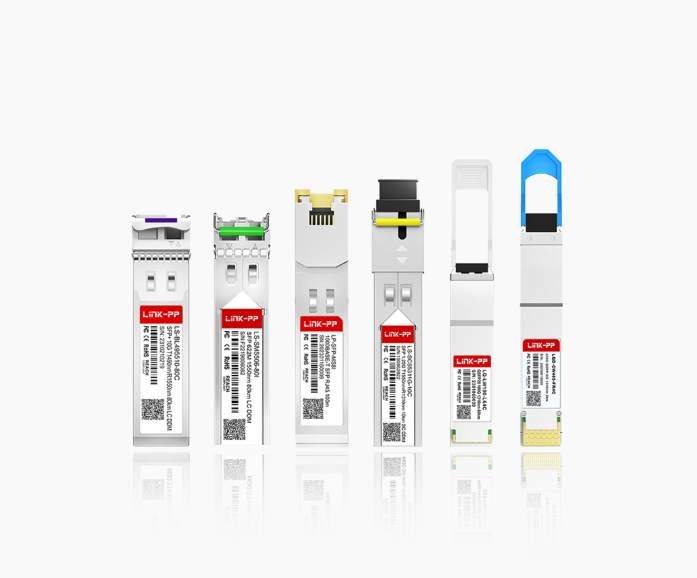
The explosion of cloud services, virtualization, AI workloads, and high-density server deployments has pushed data centers to pursue faster, more efficient Ethernet technologies. To bridge the gap between 10 GbE and cost-intensive 40/100 GbE, the IEEE introduced IEEE 802.3by, defining a single-lane 25 Gb/s Ethernet physical layer, commonly known as 25GBASE.
This article explains what IEEE 802.3by is, why it matters, and how it enables scalable 25 GbE deployment — along with how LINK-PP’s SFP28 modules support this ecosystem.
🔹 What Is IEEE 802.3by?
IEEE 802.3by is an amendment to the IEEE 802.3 Ethernet standard that defines the specifications for 25 Gigabit Ethernet over a single electrical lane.
It standardizes 25 Gb/s transmission across:
Direct-attach copper (DAC) cables
Backplane channels
Multimode fiber
The goal: deliver a simple, cost-effective, high-density upgrade path from 10G to 25G, especially in data-center server-to-leaf switch connections.
🔹 Why 25GBASE Was Created
1. Single-lane efficiency
Earlier 40GbE links used 4 × 10 Gb/s lanes. In contrast, 25GBASE uses 1 × 25 Gb/s lane, offering:
Higher bandwidth per lane
Lower power consumption
Reduced cost per port
Simpler cabling and optics
2. Perfect step-up from 10G
25 Gb/s provides 2.5× the bandwidth of 10 Gb/s with only a small increase in power and cost — ideal for high-density server I/O.
3. Scalable path to 50/100 GbE
25G forms the building block for:
50G Ethernet (2 × 25G lanes)
100G Ethernet (4 × 25G lanes)
It’s a foundational speed in modern data-center fabrics.
🔹 Key Technical Features of 25GBASE (IEEE 802.3by)
Feature | Description |
|---|---|
Line speed | 25 Gb/s per lane |
Coding | 64b/66b |
Optional RS-FEC | |
Media | Copper, backplane, multimode fiber |
Module format | SFP28 |
Target use | Server-to-switch interconnects |
🔹 25GBASE Interface Variants
Standard | Medium | Use Case |
|---|---|---|
25GBASE-CR / CR-S | Twinax copper DAC | Short-reach (1–5 m) rack interconnects |
25GBASE-KR / KR-S | Backplane | Server/line-card backplane links |
Multimode fiber | Up to ~100 m on OM4 fiber | |
Single-mode fiber | ~10 km (*defined in later amendments) |
🔹 Typical Deployment Scenarios
Data-Center Leaf-Spine Networks
25GBASE helps operators scale east-west traffic while controlling infrastructure cost and footprint.
Server-to-Top-of-Rack (ToR) Links
Servers with 25G NICs connect to ToR switches using SFP28 optics or DAC cables.
Aggregation and Edge Computing
25G-capable uplinks provide the right balance between throughput and cost, especially in edge and AI-ready architectures.
🔹 Best Practices for Deploying 25GBASE
1. Choose the right media
1–5 m: DAC copper (25GBASE-CR)
Up to ~100 m: Multimode fiber (25GBASE-SR + OM4)
Campus/long-reach: Single-mode (25GBASE-LR or later specs)
2. Validate hardware interoperability
Ensure that switches, NICs, and optical modules all comply with IEEE 802.3by.
3. Consider FEC requirements
Enable RS-FEC where link margin or EMC environments demand extra robustness.
🔹 SFP28 Modules and LINK-PP Solutions

The primary form factor for 25GBASE is SFP28 — mechanically similar to SFP+, but with enhanced electrical specifications for 25 Gb/s signaling.
LINK-PP offers IEEE 802.3by-aligned 25G SFP28 optical modules and DAC cables for high-density data-center deployments:
🔗LINK-PP 25G SFP28 Transceivers
Key benefits of LINK-PP 25G modules:
Low-latency, high-stability link performance
OEM-grade compatibility for major switch brands
Proven reliability for hyperscale and enterprise data centers
Competitive pricing for volume deployments
🔹 Summary
The IEEE 802.3by standard enables efficient, scalable, single-lane 25 GbE deployment — now a core technology in modern data centers. With straightforward cabling, strong backward-compatibility with 10G, and forward scalability to 50/100G and 25GBASE, 25GBASE is an essential stepping stone in network evolution.
For engineers and planners moving to 25 GbE, LINK-PP SFP28 modules and DAC solutions provide reliable, cost-optimized connectivity aligned with IEEE 802.3by specifications.



